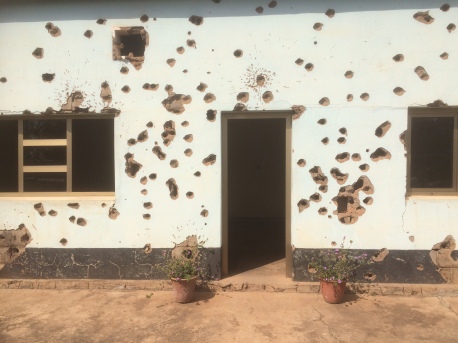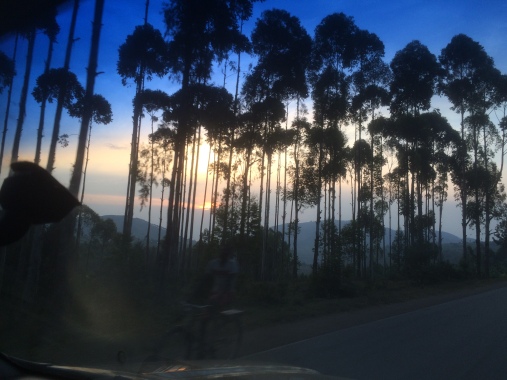

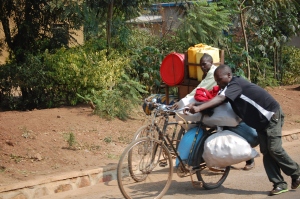
I think most people who have any kind of real traveling under their belt will tell you that you don’t truly find out how a country really works until you leave the cities and see what the hinterland looks like. Now a full week into my volunteering spell in Kigali, my fellow volunteers and I decided to absent ourselves from city life for two days and see what the countryside would do to inform us about Rwandan life.
We had also decided to do something positive for Rwanda’s emerging tourist market by going down and staying overnight in Akagera national Park, which effectively forms a large part of the border with Tanzania. So at 7.15am on Saturday morning we loaded ourselves into two 4X4s, threw ourselves at the mercy of our drivers Fabrice and Emmanuel, and headed East out of Kigali proper.
I still have not managed to find a map of the city, but my perception is that it lacks a discernible ‘centre’ per se. In any case, about 30 minutes after we left the hotel, we could see that ‘the city’ was ebbing fast and the country was taking over. The roads were pretty good as we went up and down the hills that the country is famous for. But what was evident from the roadside villages and looking down the valleys was that there is still a lot of poverty in Rwanda. There are red dirt tracks leading back from the two-lane main roads, but the majority of houses on those main roads are basic mud-block houses and my impression was that people live outside as much as possible, and probably only go in to sleep. At least during the current dry season. Instinctively I feel that the houses that are out of sight are likely to be even more basic than those on the roadside.
Children were to be seen in great numbers, and it occurred to me that in a subsistence agricultural economy every pair of hands helps, even if another mouth to feed goes with them. We certainly saw lots of kids working, minding goats, and fetching water – of which more later. And lots of very young kids apparently unsupervised, though in rural communities I know that ‘everyone looks out for everybody else’ I already knew that walking in Africa is not a pastime, it’s a way of life. But the numbers of people walking the sides of the roads still always makes an impact. Cycles were also in evidence, and we’re not talking about slim, carbon-fibre models here. Rural Africa runs on steel frames, every bike has a carrier, and most that we met or passed had at least one person on that carrier. They are often decorated with colourful mud-flaps, ribbons etc. But more than that, mostly people – kids included – were hauling water on their bikes. The pictures illustrate this quite vividly.
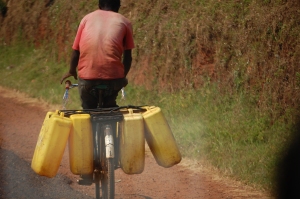

I started to form a link in my head back to rural Ireland in the 40s and 50s when houses didn’t have running water, but every so often there was a parish pump that would deliver drinking water (and gave rise to the parish pump politics phrase). Now if you see them, they’re painted up tourist relics or ensconced in a theme pub somewhere. In Rwanda however, they are alive and well and every few km along the road you could see a group of people waiting their turn to fill up at the local ‘pump’. I’m hoping that the water is free, given the poverty of much of the audience, but what impressed most was the sheer numbers of people hauling it on their bikes. Up those ever present hills.
I think the images posted with this blog probably tell more than words can about where rural Rwanda is, and what keeps it afloat. Small banana patches are very common, people dig small plots with those kind of spade-hoe that never seemed to get to Western Europe, but works very effectively here. Goats are common, so are Ankole cattle, with big horns. The soil is lava-red, people (mainly women) balance loads with practised ease on their heads, and mobile phone operators seem to be everywhere, as simple phones are affordable and – we’re told – used for many ingenious purposes. Oddly, there were no dogs in evidence, which I found strange as I have seen them in the poorest of places previously. Something to investigate.
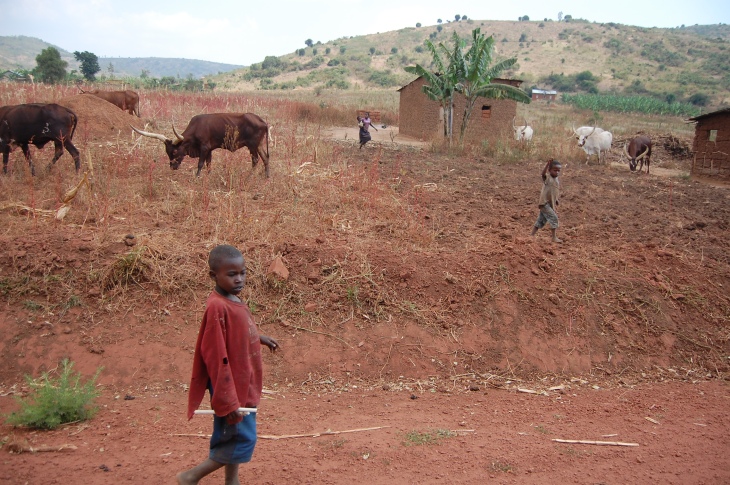
So after roaming the roads of Eastern Rwanda we finally came to Akagera game park, which proved to be a very beautiful spot. It’s large, with a range of habitats, from bush in the south to savannah in the north, and with a string of hippo-filled lakes on the extreme east and bordering Tanzania. These are effectively fed by the Akagera river, which is one of the source rivers which eventually combine to form the Nile. Stanley (yes, THE Stanley) was here in 1876, we were told, and Lake Ihema was apparently thus called because it was the nearest sound in local dialect to what Stanley kept saying, which was ‘thanks’. Thus are legends born, and I’m in no position to argue. We enjoyed a varied game drive on Sunday, and then headed back onto the red dirt roads, which soon became tarmac, and took us back to Kigali around dusk.
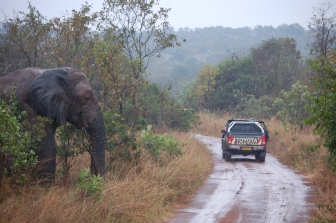
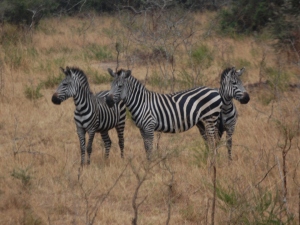
And yes, they were still carrying water along the roads of Rwanda on Sunday evenings. More a way of life than a luxury, and I don’t think in this context there is any real ‘day of rest’. Every day’s a working day in rural Rwanda. #ibmcsc rwanda
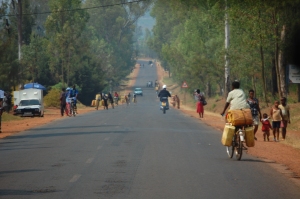
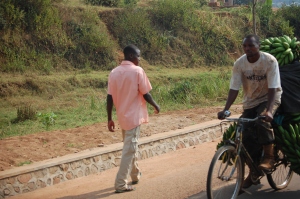
I came upon a child of God, he was walking along the road, And I asked him “Where are you going”? and this he told me…
